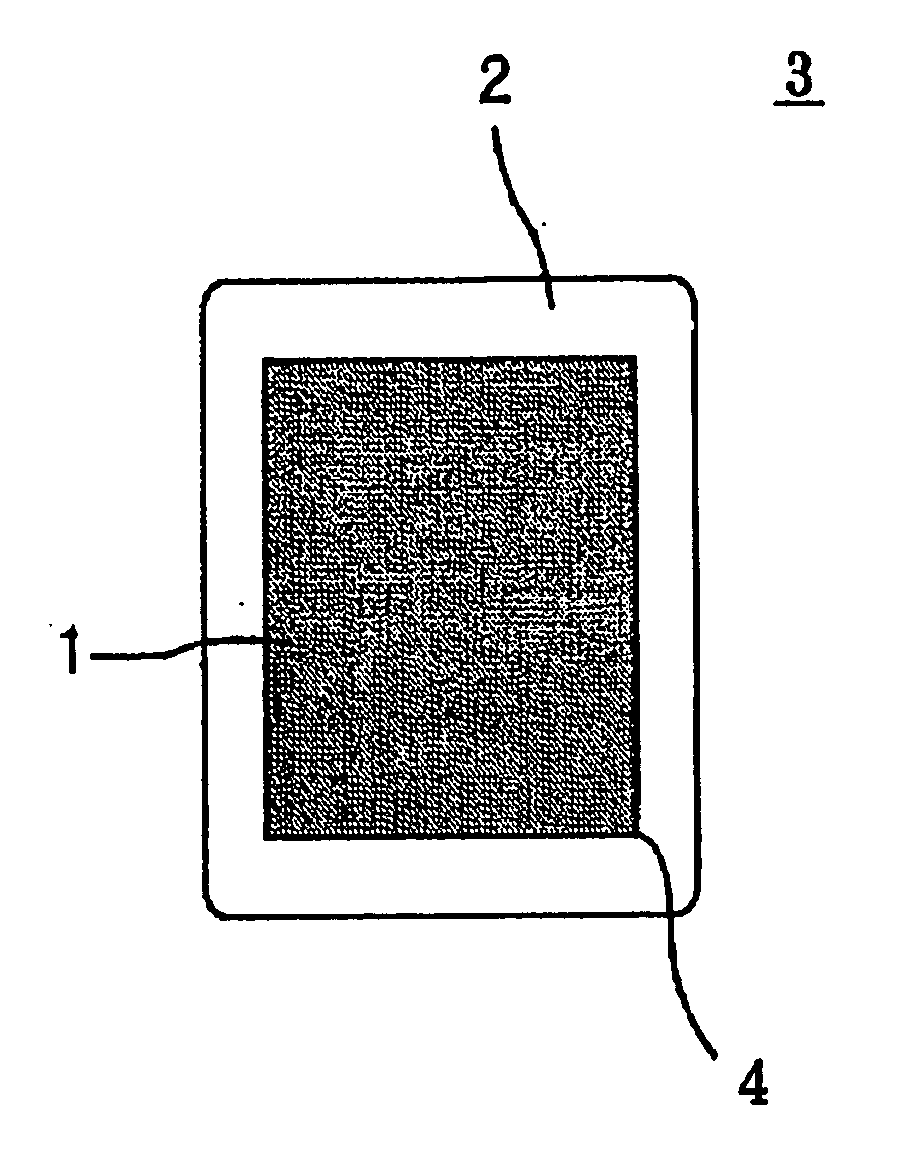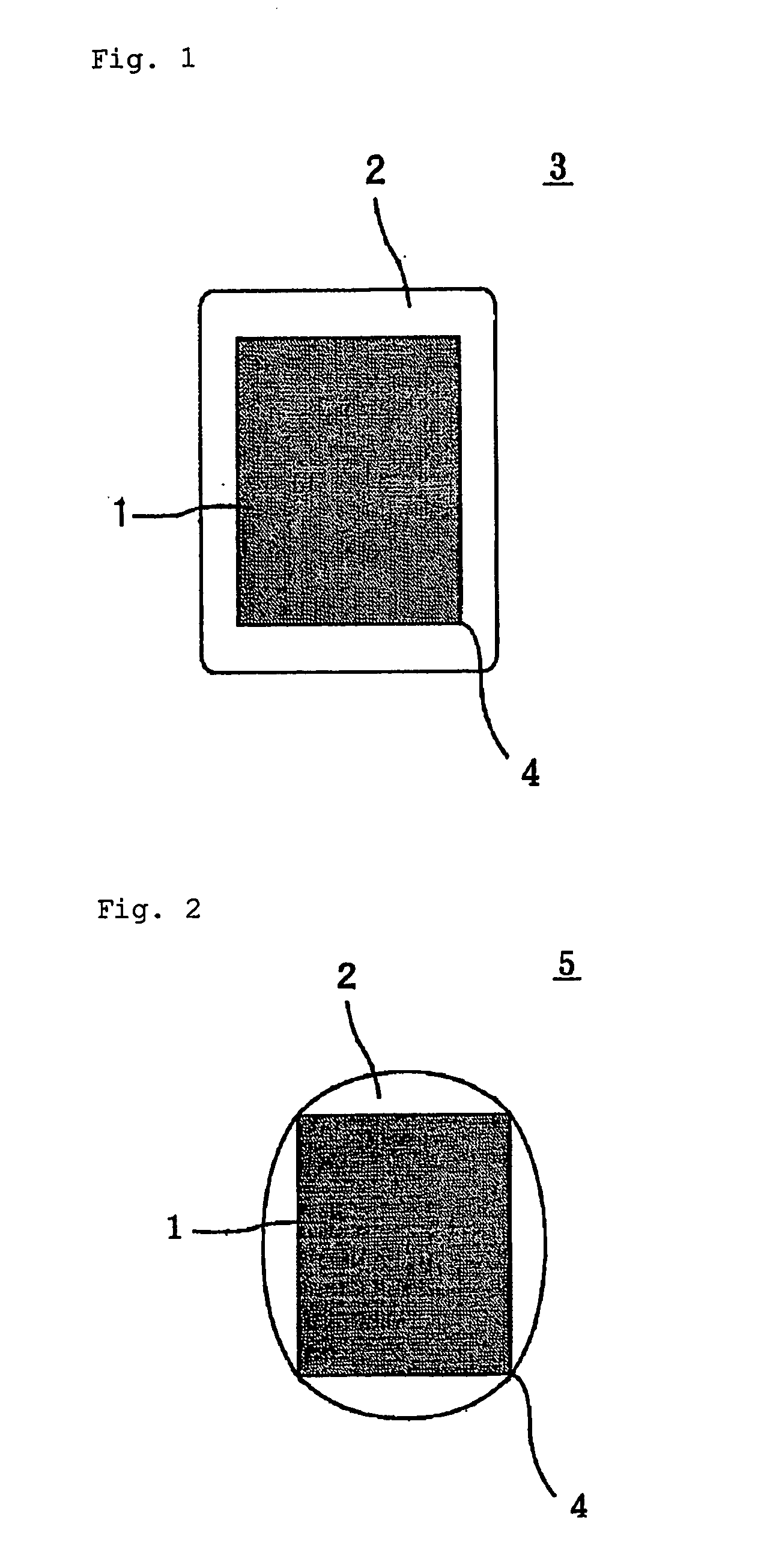Method of coating electric wire having edges and insulated wire
a technology of insulating wire and electric wire, which is applied in the direction of fluid pressure measurement, liquid/fluent solid measurement, peptide, etc., can solve the problems of insufficient insulating wire having an adequate insulating property and thin film thickness of an insulating film formed at an edg
- Summary
- Abstract
- Description
- Claims
- Application Information
AI Technical Summary
Benefits of technology
Problems solved by technology
Method used
Image
Examples
production example 1
Production of an Acrylic Resin 1 Having an Epoxy Group
[0123] Butyl cellosolve (120 parts) was put in a reaction container and heated under stirring at 120° C. A mixed solution of 2 parts of tert-butylperoxy-2-ethylhexanoate and 10 parts of butyl cellosolve, and a monomer mixture consisting of 40 parts of glycidylmethacrylate, 150 parts of 2-ethylhexyl methacrylate, 50 parts of 2-hydroxyethyl methacrylate and 65 parts of n-butyl methacrylate were added dropwise thereto over 3 hours. This mixture was aged for 30 minutes and, then, a mixed solution of 0.5 part of tert-butylperoxy-2-ethylhexanoate and 5 parts of butyl cellosolve was added dropwise thereto over 30 minutes. Further, the resulting mixture was aged for 2 hours to obtain the solution of an acrylic resin 1 having an epoxy group with a non-volatile content of 42%. The number-average molecular weight, measured by gel permeation chromatography (GPC) in terms of polystyrene, of this acrylic resin 1 having an epoxy group was 110...
production example 2
Production of an Ammonium Quaternizing Agent 1
[0124] Isophorone diisocyanate (220 parts), 40 parts of methyl isobutyl ketone and 0.22 part of dibutyltin dilaurate were put in a reaction container, and 135 parts of 2-ethylhexanol was added dropwise thereto at 55° C. Thereafter, the mixture was reacted at 60° C. for 1 hour to obtain a half-blocked isocyanate solution. This solution was further heated to 80° C. and a mixed solution of 90 parts of N,N-dimethylaminoethanol and 10 parts of methyl isobutyl ketone was added dropwise thereto over 30 minutes. After recognizing that an isocyanate group disappeared using infrared spectrum analysis, the mixed solution was cooled to room temperature to obtain tertiary amine having a blocked isocyanate group. This solution was neutralized by adding 180 parts of a 50% aqueous solution of lactic acid to obtain a solution of an ammonium quaternizing agent 1.
production example 3
Production of an Ammonium Quaternizing Agent 2
[0125] A solution of an ammonium quaternizing agent 2 was obtained by following the same procedure as in Production Example 2 except for using 160 parts of triethylene glycol monomethyl ether in place of 135 parts of 2-ethylhexanol used as a block agent and changing the amount of methyl isobutyl ketone as a solvent from 40 parts to 25 parts.
PUM
| Property | Measurement | Unit |
|---|---|---|
| volume-average particle diameter | aaaaa | aaaaa |
| volume-average particle diameter | aaaaa | aaaaa |
| thickness | aaaaa | aaaaa |
Abstract
Description
Claims
Application Information
 Login to View More
Login to View More - R&D
- Intellectual Property
- Life Sciences
- Materials
- Tech Scout
- Unparalleled Data Quality
- Higher Quality Content
- 60% Fewer Hallucinations
Browse by: Latest US Patents, China's latest patents, Technical Efficacy Thesaurus, Application Domain, Technology Topic, Popular Technical Reports.
© 2025 PatSnap. All rights reserved.Legal|Privacy policy|Modern Slavery Act Transparency Statement|Sitemap|About US| Contact US: help@patsnap.com



